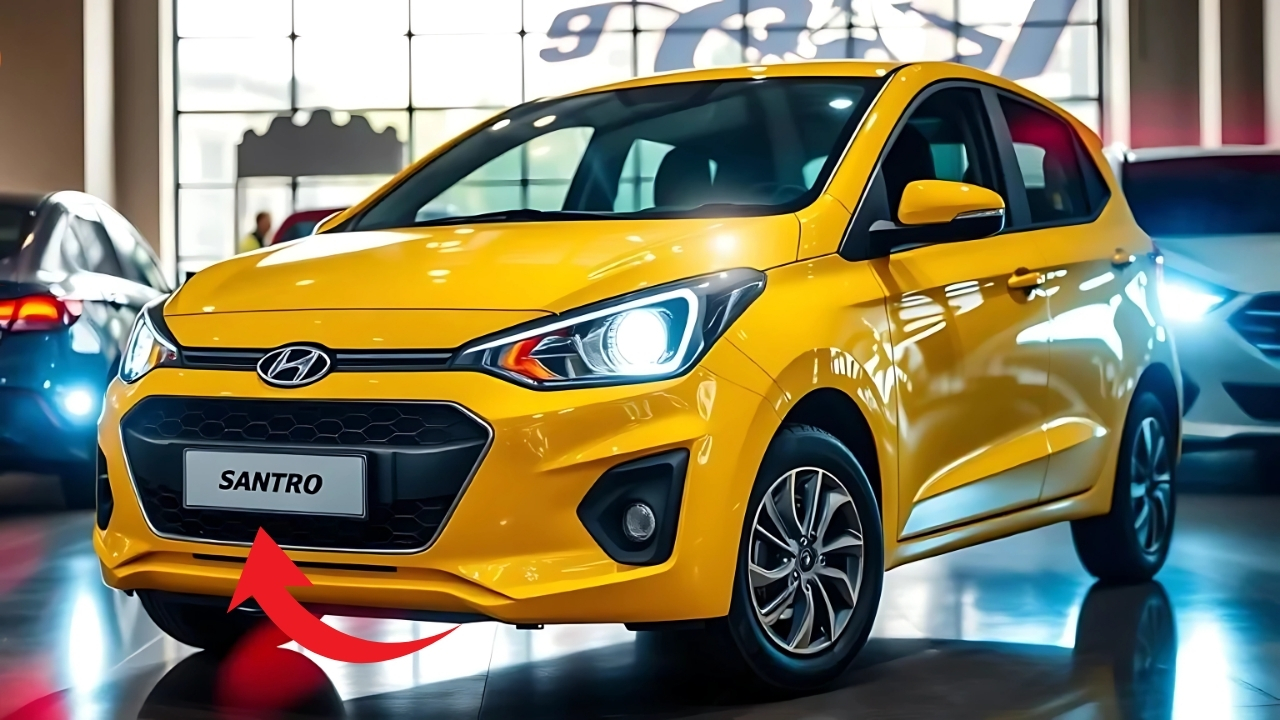Hyundai Santro 2025: In a development that has well and truly set the cat amongs the pigeons in the Indian auto world, Hyundai Motor India has announced that it will bring back what can be legitimately be described as its most legendary name — that of Santro – by 2025.
The revival is part of a strategic plan to regain the entry-level hatchback space which the iconic Santro had successfully created when it made its entry into Indian roads in 1998.
Hyundai Santro 2025: A Legacy Reborn
The Santro has a special place in the annals of Indian motoring history as the car that millions of families took their first sip of modern personal mobility from.
The first car from Hyundai to enter the Indian market, the “Sunshine car” as it was formally titled cemented the South Korean manufacturer’s position in one of the known largest car markets in the world.
The 2025 edition is striving to return to those roots that made the very first a hit; affordable, dependable, and possessing a dash of swagger unseen in its class at the time, set in a package ambitious and contemporary for today’s buyers.
Industry analysts consider this move of significance, especially since the rest of Hyundai’s collection has been going up market in recent years.
Modern Design Philosophy
The latest iteration of the Santro bears Hyundai’s ‘Sensuous Sportiness’ design language, with a focus on urban-friendly dimensions.
Early design sketches indicate a much sleeker appearance than its predecessors, with the company’s hallmark parametric grille design being another characteristic carried over from other recent Hyundai vehicles.
The body shape continues with the useful hatchback proportions but with more expressive creases and an ever so slightly stronger attitude.
LED lighting features are no longer the preserve of premium segments, with even the Santro’s design language getting in on the act, making it appear a lot more upmarket without moving away from the accessibility mission.
The interior sketches show a cabin that focuses on perception quality and technology integration – both being areas in which consumer expectations have matured vastly since the original Santro’s time.
The dashboard has been oriented horizontally for an airier feel, its floating infotainment screen offering easy-to-reach physical volume and tuning knobs.
Technology That Matters
The Santro’s base uses a back-to-basics engineering philosophy but the biggest dilution of its utility roots is in, guess what, its tech package.
The 2025 model really adopts the connectivity with features from Hyundai’s BlueLink ecosystem so drivers can bring their digital lives in to the vehicle in ways that were only available on more expensive cars.
This infotainment system pairs with wireless smartphone integration via Android Auto and Apple CarPlay, and a digital instrument cluster that allows for personalized information displays.
These details are the result of Hyundai recognizing that the entry level buyer of today is much less willing to deal with deficiencies in screentech basics.
Safety technology is front and centre, with six airbags anticipated to be standard across the range – a big dedication to occupant protection in a segment where corners are often cut when it comes to such things.
Among the more notable available driver assistance features are automatic emergency braking and lane-keeping assistance, opening up what were, until now, expensive luxury-car technologies to a wider range of drivers.
Effieciency and Powertrain performance
On the mechanical front, expect the 2025 iteration of Santro to be powered by an urban-friendly 1.1 liters naturally aspirated petrol engine updated to meet the current emission norms along with decent fuel efficiency figures, certainly important in its competition.
We’d expect this powerplant to make about 69 hp and 99 Nm that may sound paltry, but should be just fine in the city.
The only transmission on offer will be a 5-speed manual as standard, with an AMT substation for the cost-effective option to conventional automatic transmission.
There are reports floating around that Hyundai is mulling over the possibility of a factory-fitted CNG model on the Grand i10 Nios to cater to the increasing need for alternative fuel options vis-à-vis the strengthening prices of petrol.
Market Positioning and Competitive Landscape Market is positioned and value chain The food packaging coatings market is well established market.
The Santro is directly rivalling established names including the Maruti Suzuki Wagon R, the Tata Tiago, and the Renault Kwid.
This area is becoming more competitive, as manufacturers push to offer more powerful machines at a point that’s reasonable for the average user.
What Hyundai seems to be doing is capitalising on its relatively premium brand positioning, but not compromising on cost – initial estimates from the market peg a starting price of around ₹4.5 lakhs (ex -showroom) for the car and that puts it bang in the middle of the two segments –
people looking to buy their first new car and the likes who are looking for a second car that can handle the household chores.
Hyundai Santro 2025: A Strategic Return to Roots
The 2025 Santro is not just another car in Hyundai’s burgeoning range; it’s a statement, a rearticulation of the basics that made the South Korean giant what it is today in India.
Though Hyundai has fared well with models like the Creta and Tucson, the Korean automaker understands it must continue playing the volume game by having a presence in the entry-level space even if that is not necessarily a lucrative market.
In a world where the needs of urban transport have changed and a younger crop of buyers is in the market for cars with different metrics in mind than ever before, the new Santro attempts to straddle the line between the practical basics of times gone by and current aspirations!
In doing so, Hyundai is seeking to reignite the magic of the original Santro, which was not just a hugely successful product, but a cultural phenomenon that played a significant role in shaping the new Indian automotive landscape.
